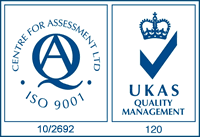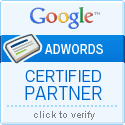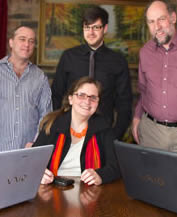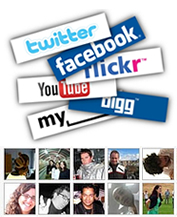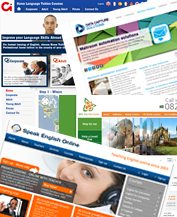Accessible Websites by Cornish WebServices
Cornish WebServices believe that websites should be readable by everyone, and this should include people with slow modems, different browsers, or screen readers. This should also include those who cannot use either a keyboard or a mouse, and those who are colour blind or have poor eyesight.
The following email was received from a visitor to the accessible VLV website that Cornish WebServices designed
Bearing in mind that I am totally blind, and use a twelve-year-old computer, I am pleased to tell you that all parts of the website which I thought would be of interest to me were successfully negotiated, including the reply option for this e-mail. Well done VLV!
The technology and standards are already there to help all websites be as accessible as possible to all. This makes economic sense and ethical sense. Websites that are designed to be as accessible as possible, are also very likely to appear high within all search engine rankings.
Websites should make use of style sheets to give the required look and feel to the webpages. This enables anyone who prefers (for example) very large text, to make use of their own style sheet to view the webpage. All webpages should make sense and be usable with no stylesheets, no graphics, no frames and no Javascript as there are still users around that use such browsers through necessity or choice.
Bobby accessible websites
All our websites are checked with Bobby to ensure that they meet the Bobby AAA rating. This means that all the information within the website can be conveyed without the need to see graphics, use stylesheets or Javascript.
All our websites are written to conform to the WAI accessibility standards - very similar to Bobby
Websites and frames
Several years ago, frames became very popular. They do make website maintenance much easier, and users do like a simple navigation panel on the left. But when poorly implemented (using the default settings of many webpage editors) they cannot be seen by some major search engines and by browsers that do not support frames (including older screen readers for partially sighted people).
Cornish WebServices do sometimes use frames - especially when the client wishes to maintain the website themselves. It is possible to create an accessible website with frames that achieves high placings in the search engines. One such website was www.sturry.kent.sch.uk a local school website that receives a large number of visitors per month (this website no longer uses frames).
Websites and colour blindness
Websites look best when they are colourful. But care must be taken to ensure that information is not conveyed within the colour that will be lost to people who are colour blind (around 10% of the population). The standard default web colours can lead to problems as the purple visited links colour is invisible on a blue background. A little known problem is that a turquoise colour becomes so pale that is is very hard to see.
To see how webpages look to colour-blind people, view the example colour-blind example webpage. This shows how many of the standard web colours become unreadable on certain backgrounds.
Websites and Screen Readers
Partially sighted or blind people may still access the Internet and use computers through the use of screen readers. Screen readers can be very sophisticated and allow experienced users to read and navigate webpages fast. Have you ever wondered why there is a 'bump' or ridge on some of the keyboard keys? These help those who cannot see.
At Cornish WebServices, we have tested out many of our websites with screen reader software to make sure that it is easy to navigate. One particular annoyance when 'listening' to websites is having to repeatedly listen to the top headers and navigation menus. On our websites we make use of the access keys to allow easy navigation throughout the site. In particular, the ALT and S keys will allow screen readers to 'Skip to the page content and ALT and 1 will always take you to the homepage.
Accessible Websites are good for business
This word document includes information on why accessible websites make good business sense.


